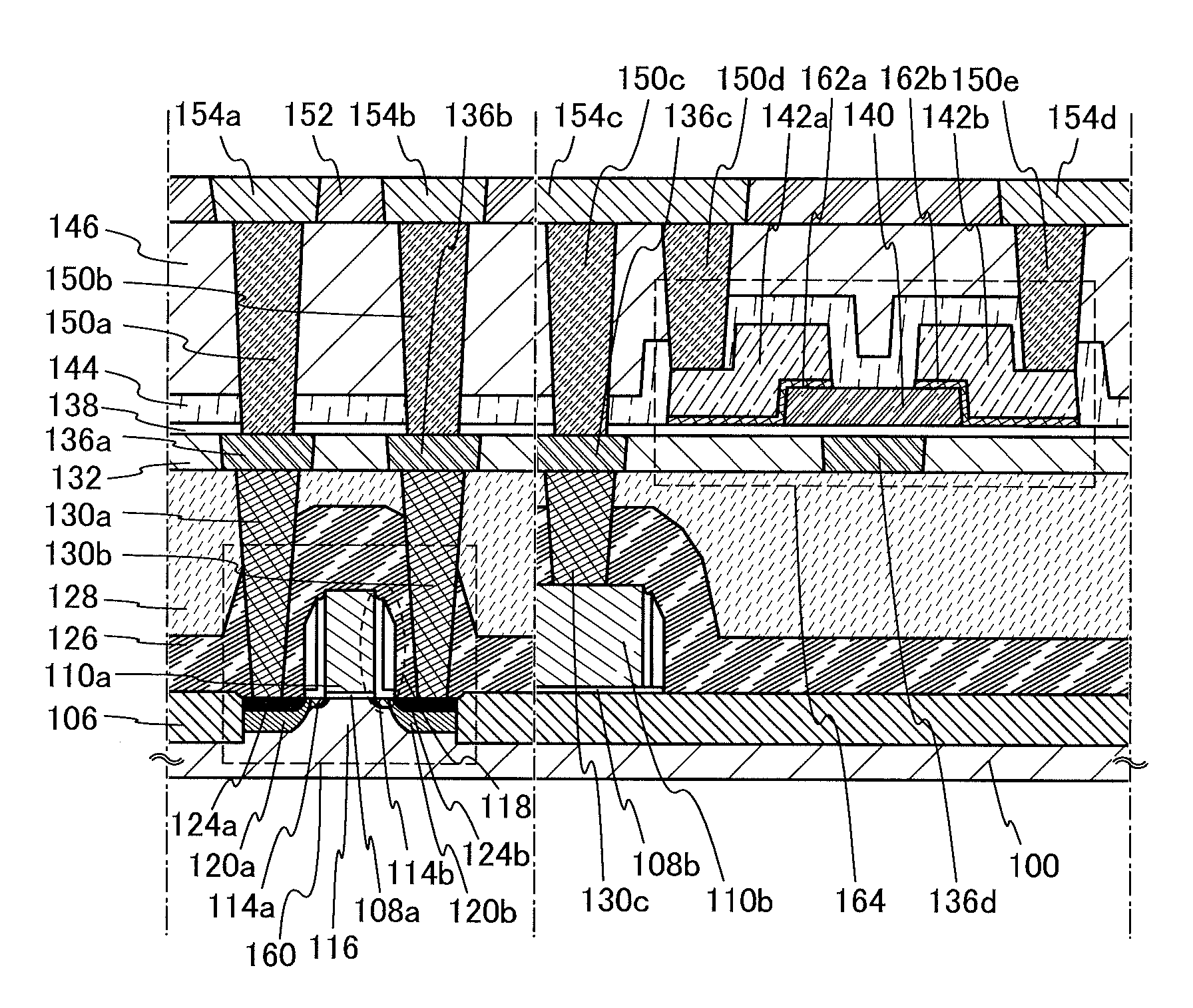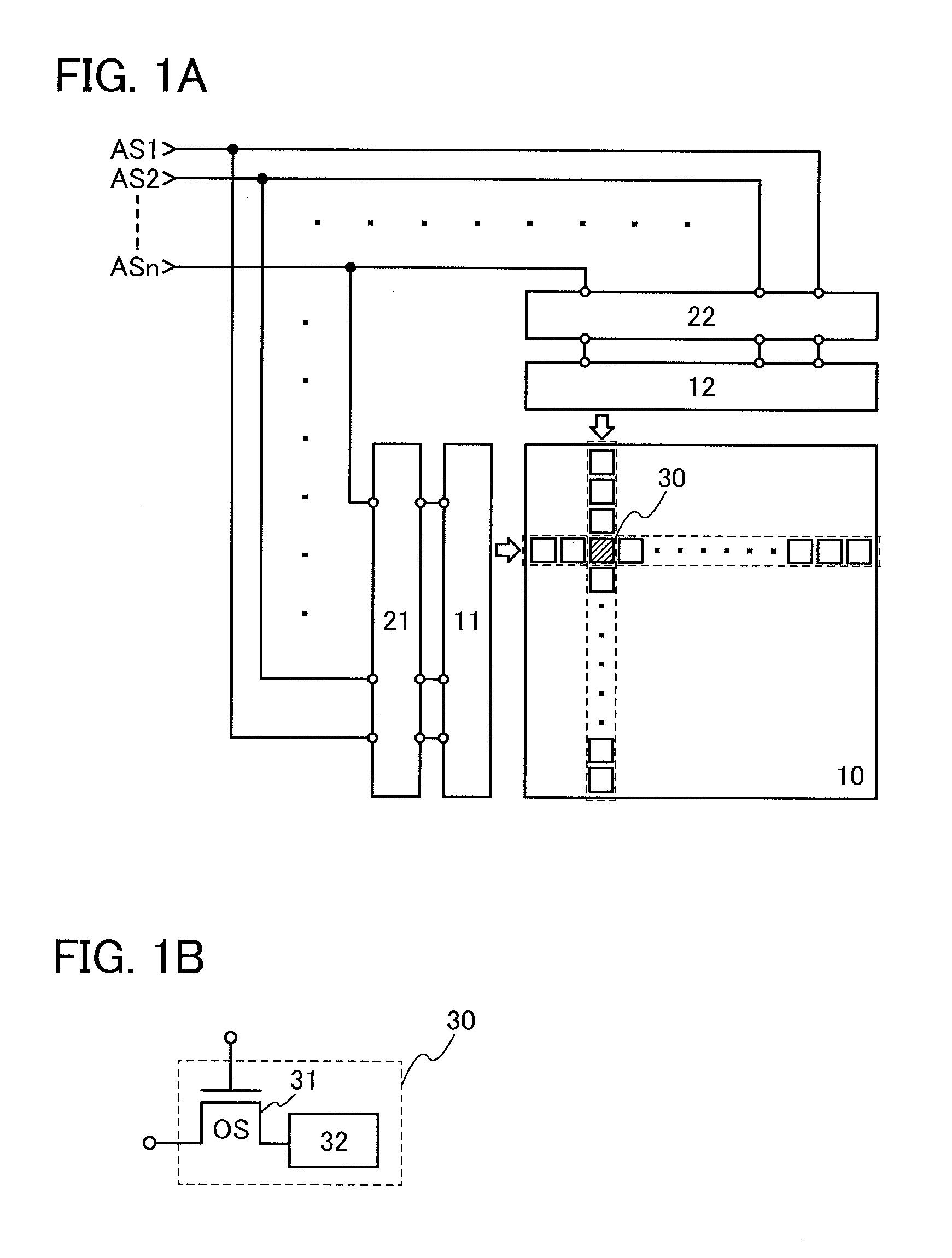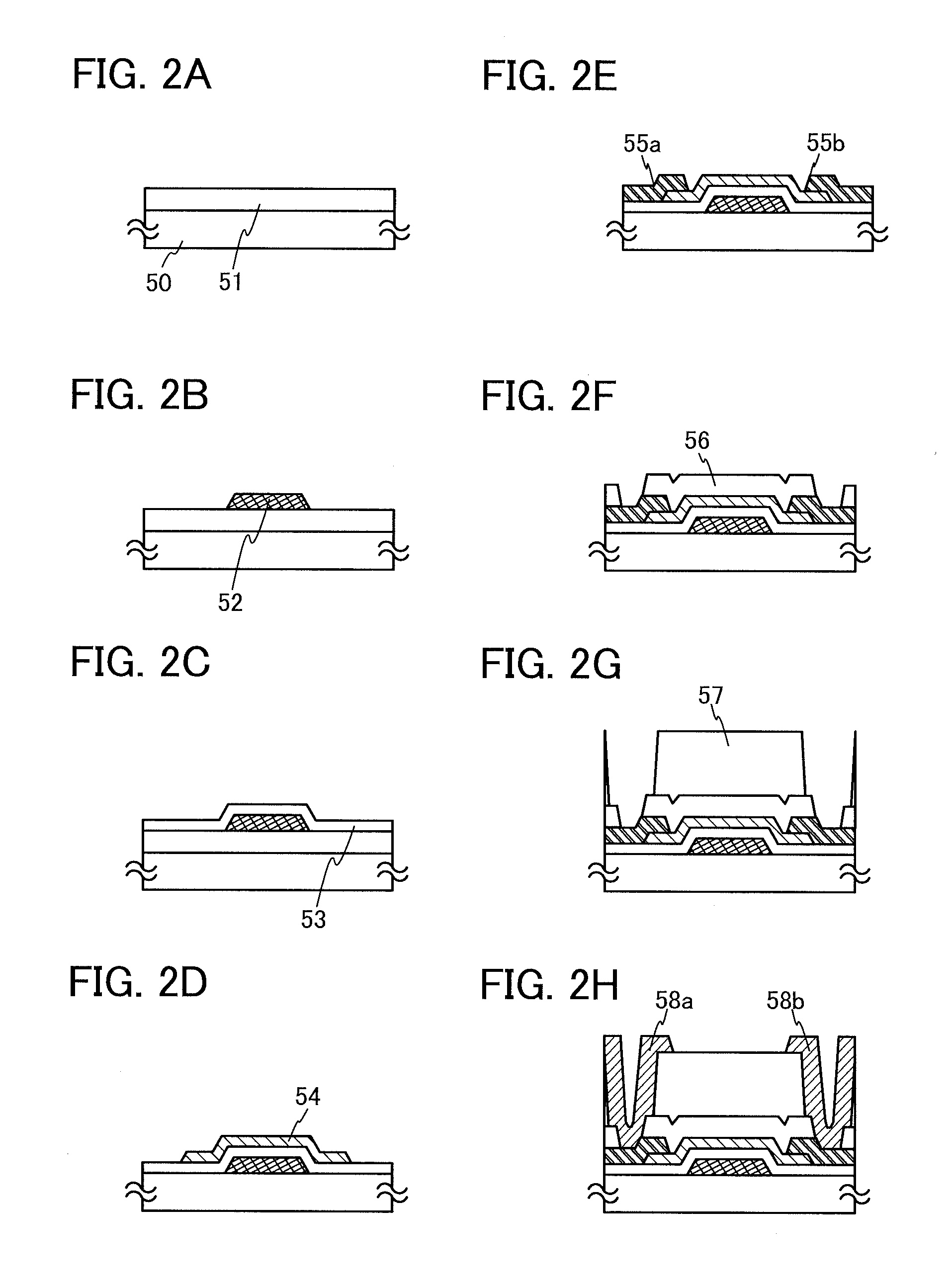Semiconductor device
- Summary
- Abstract
- Description
- Claims
- Application Information
AI Technical Summary
Benefits of technology
Problems solved by technology
Method used
Image
Examples
specific example 2
of Memory Cell 30
[0116]FIG. 9B is a circuit diagram illustrating a specific example of the memory cell 30, which is different from that in FIG. 9A. Each of the memory cells 30 in FIG. 9B is one of the memory cells 30 arranged in a line. The memory cell 30 includes the transistor 31, a transistor 40, and a capacitor 41. The gate of the transistor 31 is electrically connected to a writing word line 42, and one of the source and the drain of the transistor 31 is electrically connected to a bit line 44. A gate of the transistor 40 is electrically connected to the other of the source and the drain of the transistor 31. One electrode of the capacitor 41 is electrically connected to the other of the source and the drain of the transistor 31 and the gate of the transistor 40, and the other electrode of the capacitor 41 is electrically connected to a reading word line 43. In addition, one of the source and the drain of the transistor 40 included in the k-th (k is a natural number greater tha...
PUM
 Login to View More
Login to View More Abstract
Description
Claims
Application Information
 Login to View More
Login to View More - R&D
- Intellectual Property
- Life Sciences
- Materials
- Tech Scout
- Unparalleled Data Quality
- Higher Quality Content
- 60% Fewer Hallucinations
Browse by: Latest US Patents, China's latest patents, Technical Efficacy Thesaurus, Application Domain, Technology Topic, Popular Technical Reports.
© 2025 PatSnap. All rights reserved.Legal|Privacy policy|Modern Slavery Act Transparency Statement|Sitemap|About US| Contact US: help@patsnap.com



